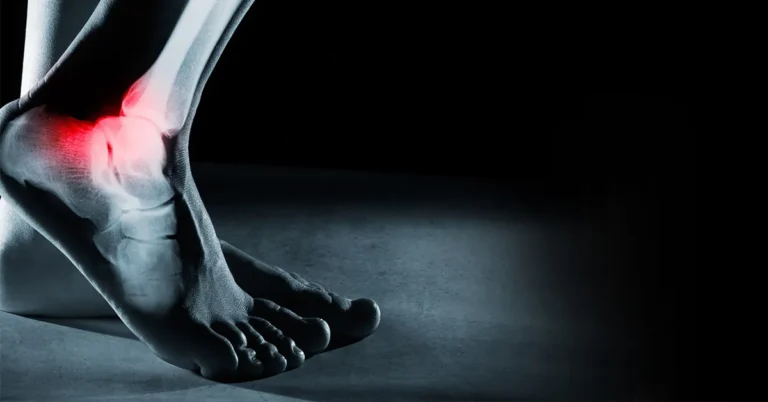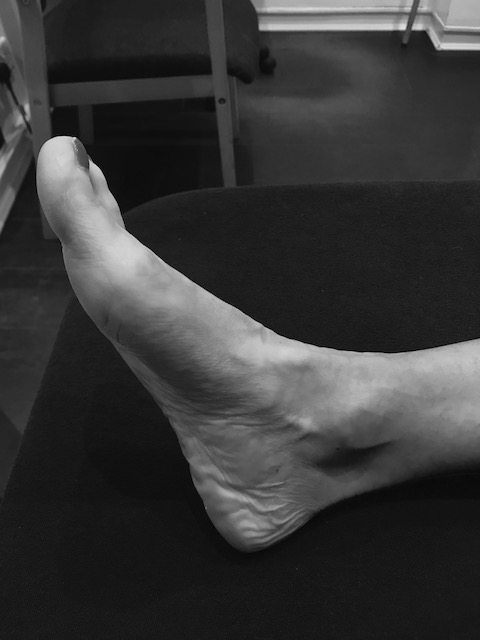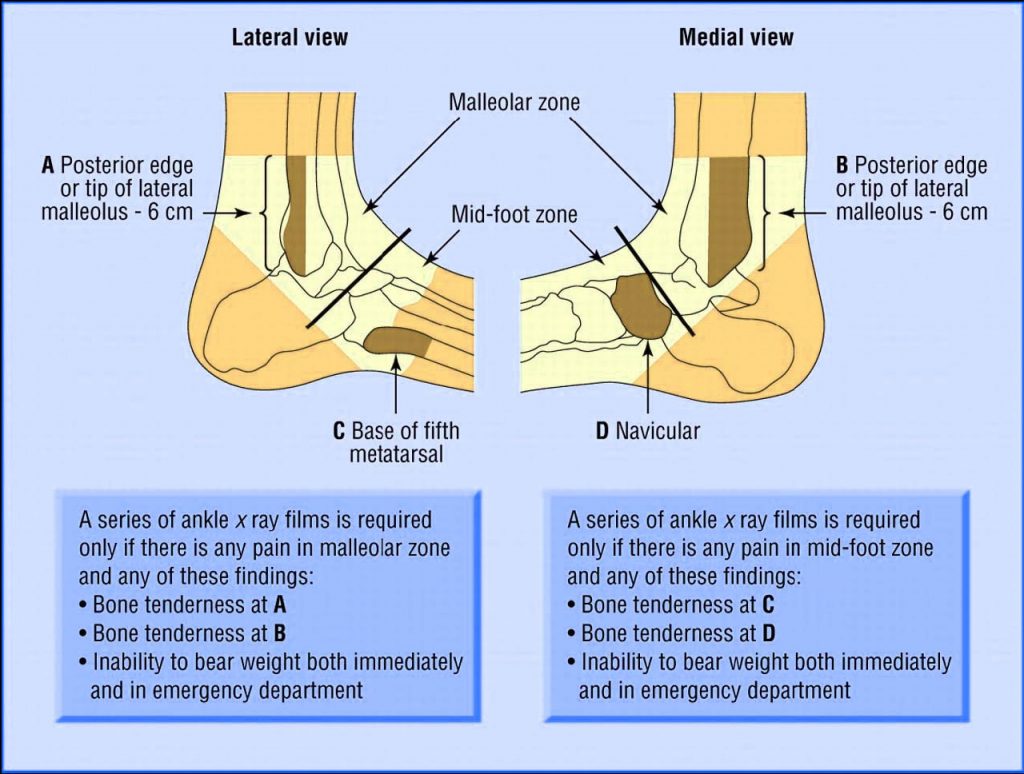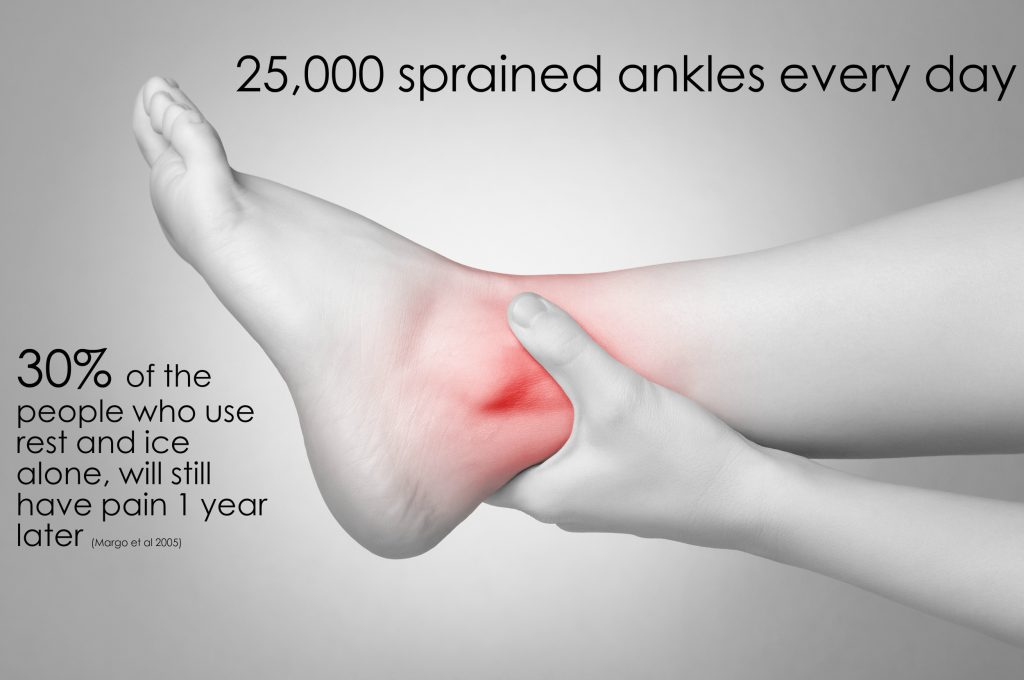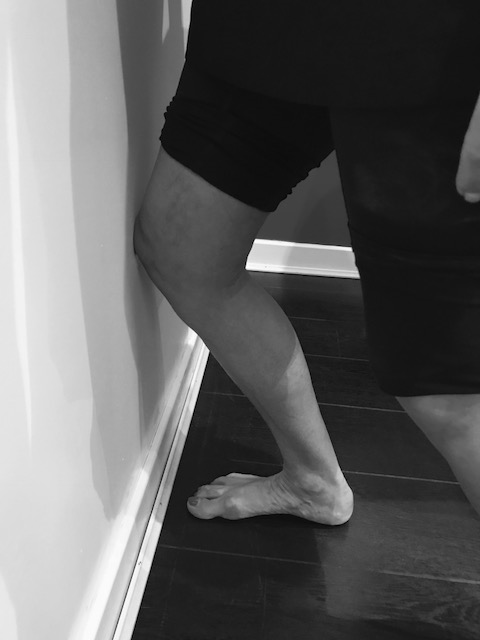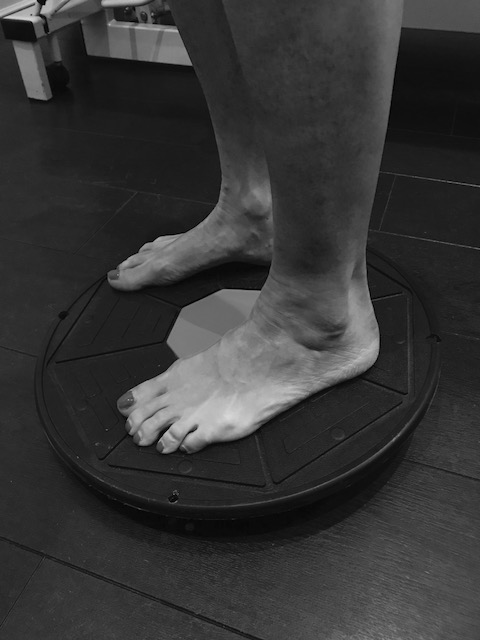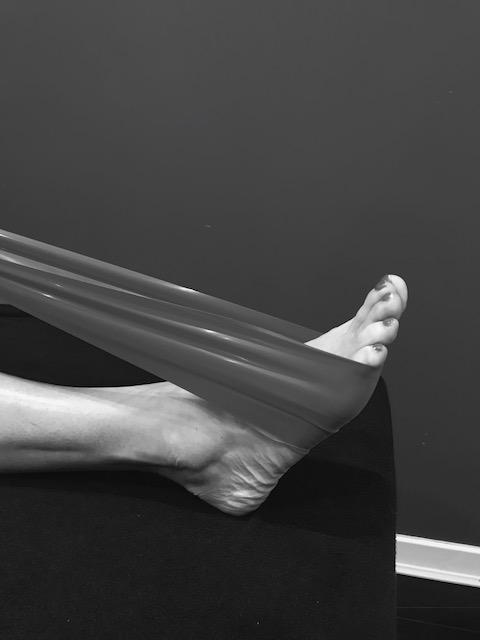Sprained ankle?
What is a sprained ankle? Well the term is applied to a soft tissue injury at the ankle joint but there are a number of possible injuries that this term may be used to describe. As a sports physiotherapist you assess the area to identify the tissues involved and the type/grade of injury. This information can give us a more accurate prognosis and indicate how much physiotherapy may be required.
The ankle joint
The ankle joint is situated between the two shin bones (tibia and fibula) and the foot (talus). It moves more readily in an up (dorsiflexion) and downward (plantar flexion) arc. Although it can tilt inwards and outwards true movement of the foot inwards and outwards comes from the sub-talar joint (inversion and eversion). There a number of important ligaments at the ankle joint the syndesmosis (between the tibia and fibula – holds the bones together to form the top of the joint), the medial ligament (between the tibia and the talus) and the lateral ligament (between the fibula and the talus/calcaneus). The lateral ligament is the most commonly injured with an inversion injury. But injury to the tibiofibular ligament can also occur when the body twists on a planted foot and this is often termed a ‘high’ ankle sprain.
Sprained tissues
A ligament is a strong fibrous soft tissue which provides a passive joint constraint to prevent excessive movement. Most people will associate a sprain with ligamentous tissue and a strain with muscle tissue. Both are termed soft tissue injuries. But the joint capsule is a ligamentous type bag which surrounds a synovial joint and injury may also occur there. So differentiating between a specific ligament and a general sprain to the capsular bag can be challenging. Read our sprained ligament blog for more information.
Ankle injury
In our experience the term sprained ankle is applied to all of these different injuries. We have listed them in order of those that present to us clinically.
- Lateral ligament sprain
- Joint sprain
- ‘High’ ankle sprain (syndesmosis)
- Medial ligament sprain
Lateral ligament sprain
There are four separate ankle ligaments laterally and they are most commonly injured when the foot inverts with the ankle positioned in a plantar flexed position. The mechanism means it is particularly common in jumping/landing sports (basketball, netball), twisting sports (football, rugby, tennis, squash), on unstable surfaces (hillwalking) or wearing shoes that place the foot in the less stable position (high heels).
Joint sprain
The excessive movement of the ankle in any direction will tighten the capsular bag around the joint. If the force and speed are excessive then the capsular bag can be sprained. The mechanisms can be similar to any of the other types of ankle sprain.
‘High’ ankle sprain
The ligament between the tibia and the fibula holds those bones together forming the top of the ankle joint. If the foot is externally rotated with the shin static then the bones are forced apart (overstretching the ligament). However this usually occurs with the foot stuck in the ground (sports with studs for example) and twisting of the shin occur. It is common in sports such as rugby, football etc.
Medial ligament sprain
The medial ligament is injured when the foot everts violently causing the ligament to overstretch. This can occur at the same time as a lateral ligament injury as a result of the forceful movement of the body during protection. But it is far less common.
Do you need an x-ray to make sure the ankle is not broken?
There are some clues that point towards a possible fracture such as an inability to weight bear or a localised ‘lump’ swelling. But the amount of pain is not one of them. Palpation of the bones in the most common areas of injury can tell us fairly accurately (95%) whether you need an x-ray or not. For this we use the Ottawa rules below.
How long will a sprained ankle take to get better?
A grade 1 injury may be painful for a couple of weeks but as soon as there is collagen fibre disruption we tend to follow physiological healing studies. This suggests that for soft tissue injury a period of 6-12 weeks is fairly standard. During this time a return to function should only be made when objective testing shows the ankle is ready to return to play following a period of rehabilitation.
What are the chances of it not recovering or recurring in the future?
Well we know that patients who fail to access physiotherapy and a rehabilitation plan are at risk of the sprain being slower to recover.
Recurrence rates in the literature vary, but can be as high as 25% in some cases.
Ankle sprain prevention, treatment and rehabilitation
Prevention of ankle sprain
- Treat injuries correctly and rehabilitate them properly. The single biggest risk factor for this injury is a previous sprain.
- Include a strength and balance program within your training week. Especially if you are participating in higher risk sports.
- Taping can have a short term effect but if your ankle remains weakened then bracing can help.
Treatment of an ankle sprain
- Apply a good initial management plan.
- Find a sports physiotherapist for an accurate diagnosis.
- Reduce pain and improve function asap. Rehabilitate early!
Rehabilitation of an ankle sprain
- Restore range of movement (especially functional ranges)
- Retrain proprioception
- Regain strength and function properly
If you have an acute or chronic ankle injury you would like assessed, then give us a call to see a sports physiotherapist on 0131 478 4646 or book online.
Other useful links:
https://www.bupa.co.uk/health-information/directory/s/sprained-ankle
